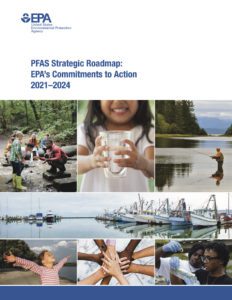Who is a member?
Our members are the local governments of Massachusetts and their elected and appointed leadership.
 On Oct. 18, U.S. Environmental Protection Agency Administrator Michael Regan announced a strategic roadmap to confront PFAS contamination nationwide.
On Oct. 18, U.S. Environmental Protection Agency Administrator Michael Regan announced a strategic roadmap to confront PFAS contamination nationwide.
The roadmap is the result of an analysis conducted by the EPA Council on PFAS, which was established six months ago. It is centered on three guiding strategies:
• Increase investments in research
• Leverage authorities to take action now to restrict PFAS chemicals from being released into the environment
• Accelerate the cleanup of PFAS contamination
“For far too long, families across America — especially those in underserved communities — have suffered from PFAS in their water, their air, or in the land their children play on,” Regan said in a prepared statement. “This comprehensive, national PFAS strategy will deliver protections to people who are hurting, by advancing bold and concrete actions that address the full lifecycle of these chemicals.”
PFAS, or per and polyfluoroalkyl substances, are also known as “forever chemicals.” Because they are water soluble, over time these chemicals from firefighting foam, manufacturing sites, landfills, spills, air deposition from factories and other sources can seep into surface soils. From there, PFAS can leach into groundwater or surface water, and can contaminate drinking water.
The roadmap commits the EPA to quickly setting enforceable drinking water limits for PFAS, as well as giving stronger tools to communities to protect people’s health and the environment.
The strategic roadmap lays out:
• Aggressive timelines to set enforceable drinking water limits under the Safe Drinking Water Act to ensure that water is safe to drink in every community
• A hazardous substance designation under the Comprehensive Environmental Response, Compensation and Liability Act, also known as Superfund, to strengthen the ability to hold polluters financially accountable
• Timelines for action on Effluent Guideline Limitations under the Clean Water Act for nine industrial categories
• A review of past actions on PFAS taken under the Toxic Substances Control Act to address those that are insufficiently protective
• Increased monitoring, data collection and research so that the agency can identify what actions are needed and when to take them
• A final toxicity assessment for “GenX chemicals” that can be used to develop health advisories that will help communities make informed decisions to better protect human health and ecological wellness
• Continued efforts to build the technical foundation needed on PFAS air emissions to inform future actions under the Clean Air Act
The EPA also announced a new national testing strategy that requires PFAS manufacturers to provide toxicity data and information on categories of PFAS chemicals. The PFAS to be tested will be selected based on an approach that breaks the large number of PFAS today into smaller categories based on similar features and considers what existing data are available for each category.
The EPA reports that its initial set of test orders for PFAS, which are expected in a matter of months, will be strategically selected from more than 20 different categories of PFAS.
President Joe Biden has called for more than $10 billion in funding to address PFAS contamination through his Build Back Better agenda and the Bipartisan Infrastructure Deal. The White House says these critical resources will enable the EPA and other federal agencies to scale up the research and work to meet the scale of the PFAS challenge.
Over the coming weeks, the EPA will be engaging with a wide range of stakeholders to continue to identify collaborative solutions to the PFAS challenge. The agency was scheduled to host two national webinars, on Oct. 26 and Nov. 2.
There are currently no federal standards for PFAS contamination in drinking water, but Massachusetts has been working to regulate the chemicals statewide. A year ago, the Baker-Polito administration announced final drinking water regulations establishing a maximum contaminant level of 20 parts per trillion for the sum of six PFAS compounds. The regulations require public water suppliers to test for the six compounds, called PFAS6, and to take remedial actions when amounts exceed the limit.
The Massachusetts Department of Environmental Protection maintains an interactive web portal that tracks PFAS testing results, remedial actions taken by public water suppliers, and funding opportunities for both testing and treatment.
MassDEP also maintains a comprehensive webpage that covers other efforts to manage PFAS in the environment, including: requirements related to waste site cleanup; testing for PFAS in wastewater; a study of the presence of PFAS in Massachusetts rivers; and information about PFAS detected in the packaging for mosquito control pesticide products used by the state in aerial spraying.
In July, the MMA hosted a webinar on the PFAS issue. Attended by more than 175 municipal officials and employees, the webinar covered the human and environmental health implications of PFAS; the state’s regulations regarding testing and detection in drinking water; treatment options and sources of funding; local case studies and experiences with PFAS contamination; and information about the Legislature’s PFAS Interagency Task Force.
For more information on the EPA’s strategic roadmap for PFAS, visit www.epa.gov/pfas.